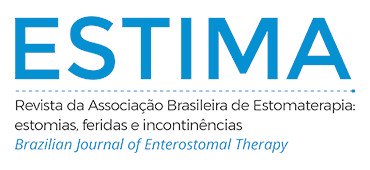Risk factors for urinary incontinence in institutionalized elderly
Keywords:
Urinary incontinence, Elderly, Homes for the Aged, Risk factors, Prevalence, StomatherapyAbstract
Objectives: To analyze the risk factors for urinary incontinence (UI) in institutionalized elderly. Methods: Cross-sectional, analytical, documentary study done by collection in 203 medical records of a long-stay institution in northeastern Brazil. An instrument for sociodemographic and health characterization and the values of the Mini Mental State Examination (MMSE) were used. The data were analyzed from the descriptive, inferential and multiple logistic regression. Results: The prevalence of UI was 42.36% and higher in women (66.28%), older (mean: 79.62 years) and dependent (89.53%). There was an association between age (p = 0.01), sex (p = 0.024), marital status (p = 0.007), religion (p = 0.015), with whom resided before institutionalization (p = 0.033), degree of dependency (p < 0.001), MMSE values (p < 0.001) and cardiovascular (p < 0.001) and neurological diseases (p < 0,001). The risk factors for UI were number of diseases (OR = 1.17; 95% CI = 1.02-1.34), consumption of five to nine medications (OR = 4.07, 95% CI = 1.14-14.52), single (OR = 2.09, 95% CI = 1.30-8.01), dependent (OR = 3.27, 95% CI = 1.33-8.04) and had a low MMSE score (OR = 0.88, 95% CI= 0.85-0.93). Conclusion: The results reveal the importance of studying UI in this population to identify early risk factors that can be prevented.Downloads
Download data is not yet available.
Metrics
Metrics Loading ...
Downloads
Published
2019-05-30
How to Cite
1.
Borges CL, Fernandes BKC, Cavalcante MLSN, Barbosa RGB, Peixoto Junior AA, Menezes LCG de. Risk factors for urinary incontinence in institutionalized elderly. ESTIMA [Internet]. 2019 May 30 [cited 2025 Apr. 24];17. Available from: https://www.revistaestima.com.br/estima/article/view/726
Issue
Section
Original article

























